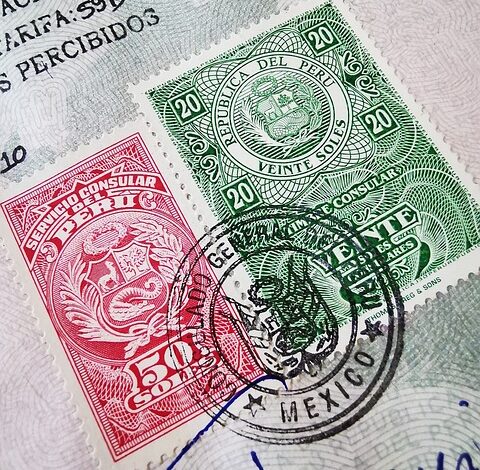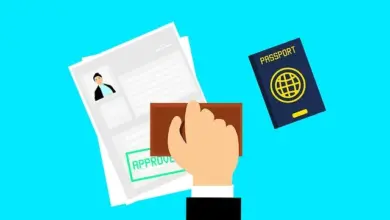How to Apply for a Student Visa to Study Abroad: A Comprehensive Guide

Studying abroad is an exciting opportunity that allows students to gain global exposure, experience diverse cultures, and access world-class education. However, one of the most critical steps in making this dream a reality is obtaining a student visa. The process of applying for a student visa can seem overwhelming at first, but with proper guidance and preparation, it becomes manageable. In this article, we will walk you through every step of the process, providing detailed explanations and tips to ensure your application is successful.
1. Understand the Basics of a Student Visa
Before diving into the application process, it’s essential to understand what a student visa is and why it’s required. A student visa is an official document issued by the government of the country where you plan to study. It grants you permission to reside in that country temporarily for educational purposes. Each country has its own visa requirements and procedures, so it’s crucial to research the specific regulations of your destination.
Key Points to Know:
- Validity Period: Student visas are typically valid for the duration of your academic program, with possible extensions if needed.
- Work Restrictions: Many countries allow students to work part-time while studying, but there are often limitations on the number of hours.
- Dependents: Some visas permit family members (spouses or children) to accompany the student under dependent visas.
2. Research Your Destination Country’s Requirements
Every country has unique visa policies, so the first step is to identify the requirements for your chosen destination. Below are some general guidelines for popular study-abroad destinations:
United States (F-1 Visa):
- Must have an acceptance letter from a U.S.-approved institution.
- Proof of financial stability to cover tuition and living expenses.
- SEVIS fee payment and Form I-20 from the university.
United Kingdom (Tier 4 Visa):
- Confirmation of Acceptance for Studies (CAS) from your university.
- Evidence of English language proficiency (e.g., IELTS).
- Proof of funds to support yourself during your stay.
Canada (Study Permit):
- Letter of acceptance from a Designated Learning Institution (DLI).
- Proof of sufficient funds for tuition and living costs.
- Medical examination results (if required).
Australia (Subclass 500 Visa):
- Offer of enrollment from an Australian educational institution.
- Genuine Temporary Entrant (GTE) statement explaining your intent to return home after studies.
- Health insurance coverage.
Germany (National Visa):
- Admission to a recognized German university.
- Blocked bank account (Sperrkonto) to prove financial capability.
- Proof of health insurance.
Tip: Always visit the official immigration website of your destination country for the most accurate and up-to-date information.
3. Gather Required Documents
Once you’ve familiarized yourself with the requirements, start collecting the necessary documents. These typically include:
Academic Documents:
- Official transcripts and diplomas.
- Standardized test scores (e.g., TOEFL, IELTS, GRE, GMAT).
- Acceptance letter from your chosen institution.
Financial Documents:
- Bank statements or sponsorship letters.
- Scholarship award letters (if applicable).
- Proof of payment for tuition fees.
Personal Documents:
- Valid passport with at least six months of validity beyond your intended stay.
- Passport-sized photographs meeting specific requirements.
- Completed visa application form.
Additional Documents:
- Health certificates or vaccination records.
- Police clearance certificate (in some cases).
- Travel itinerary (if requested).
Pro Tip: Make multiple copies of all documents—both physical and digital—to avoid any last-minute stress.
4. Complete the Application Process
The actual application process varies depending on the country, but here’s a general outline:
Step 1: Fill Out the Application Form
- Download the visa application form from the official immigration website.
- Provide accurate and truthful information. Any discrepancies can lead to rejection.
Step 2: Pay the Visa Fee
- Most countries require a non-refundable visa processing fee. Ensure you pay using the accepted method and keep the receipt as proof.
Step 3: Schedule an Appointment
- Book an appointment at the nearest embassy or consulate for your visa interview. Some countries may also require biometric data collection.
Step 4: Attend the Visa Interview
- Dress professionally and arrive early for your interview.
- Be prepared to answer questions about your academic plans, financial situation, and future goals.
- Stay calm and confident throughout the process.
Example Questions You Might Be Asked:
- Why did you choose this particular university/course?
- How do you plan to finance your education?
- What are your plans after completing your studies?
5. Prepare for Potential Challenges
While applying for a student visa, you might encounter certain challenges. Here’s how to address them:
Challenge 1: Financial Constraints
If proving financial stability is difficult, consider applying for scholarships or seeking sponsorships from family members or organizations.
Challenge 2: Language Barriers
Improve your language skills before applying. Take additional courses or practice speaking with native speakers to boost your confidence.
Challenge 3: Rejection
In case your application is rejected, carefully review the reason provided by the authorities. Address the issue and reapply if possible.
6. After Receiving Your Visa
Congratulations! Once your visa is approved, take these final steps to prepare for your journey:
Book Your Flight
Secure your travel arrangements well in advance to get the best deals.
Arrange Accommodation
Contact your university’s housing office or search for private rentals near campus.
Pack Wisely
Create a checklist of essentials, including clothing, electronics, medications, and important documents.
Attend Orientation Programs
Most universities offer orientation sessions for international students. Participate actively to familiarize yourself with the new environment.



